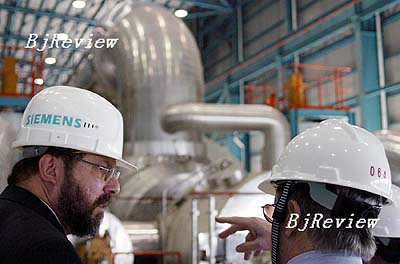|

France's Groupe Danone, the world's largest yogurt company, has divorced Shanghai-based Bright Dairy & Food Co. Ltd. after 15 years of happily married life together.
Danone Asia Pte Ltd., a unit of Groupe Danone, had sold the entire 20.01-percent stake in Bright Dairy for 4.58 yuan ($0.61) per share to Bright Dairy's two shareholders, Shanghai Dairy Group and S.I. Food Products Holdings Ltd., announced Bright Dairy on October 16. At the same time, Danone agreed to pay 330 million yuan ($44 million) as compensation for the costs Bright Dairy spent on promoting Danone products in China. Since then, their trademark agreement ended.
Danone's income from the Chinese market has skyrocketed and its brand influence in China has been amplified since the joint venture was established in 1992. Danone products held a 15-percent stake in the east China market and a 40-percent stake in the south China market last year. From 2002 to 2006, Bright Dairy sold 1.8 billion yuan ($240 million) of Danone products, of which sales of more than 600 million yuan ($80 million) were completed last year. From 2000 to 2005, Danone reaped cash dividends worth nearly 40 million yuan ($5.3 million) from the joint venture.
The decision has given rise to doubts over whether the sides should have terminated such a lucrative joint venture business.
Doom of joint ventures
More joint venture partners have also planned annulments.
On January 23 of this year, Changjiang Securities and BNP Paribas Peregrine announced they would terminate a joint venture securities company called Changjiang BNP Paribas Peregrine Securities Ltd. BNP Paribas Peregrine sold its 33.33-percent stake in the joint venture to Changjiang Securities because they "held different opinions on the future development of the joint venture securities company." Established in March 2003, the joint venture securities company was the first of its kind in China after the country's entry into the World Trade Organization (WTO).
BNP Paribas Peregrine is a wholly owned subsidiary of BNP Paribas and its equity investment banking arm in the Asia Pacific region excluding Japan.
In early September, Shanghai Electric Co. Ltd. terminated a 50-year joint venture agreement with Germany's Carl Schenck AG and bought out its entire stake in Schenck Shanghai Testing Machinery Corp. Ltd. and renamed the joint venture Shanghai Xinke Testing Machinery Corp. Ltd. after restructuring.
Many Sino-foreign joint ventures have decided to part ways in the past couple of years, said Wang Zhile, a researcher on multinationals with the Chinese Academy of International Trade and Economic Cooperation (CAITEC) directly under the Ministry of Commerce.
Many multinationals entered the Chinese market by establishing joint ventures with domestic partners when China first opened its economy to the rest of the world. Statistics from the Ministry of Commerce show that in the 1980s and the first half of the 1990s, the overwhelming majority of foreign direct investment (FDI) was completed through joint ventures. In 1989, joint venture formation reached its peak with the number accounting for 70 percent of companies with foreign investment. Since mid-1990s, wholly foreign-owned (WFO) companies have gradually replaced joint ventures to become a major form of FDI in China. Foreign investors with joint venture operations in China are seeking to either turn their business into WFO entities or become the controlling shareholder of the company through acquisition or increased investments.
Panasonic, P&G, Siemens and Hitachi, for example, have completed the transformation, said Wang.
In 1998, WFO companies constituted 41.8 percent of foreign investment in China, exceeding for the first time the proportion of joint ventures, or 33.2 percent. In 2006, WFO entities accounted for 70.3 percent and joint ventures, 21.7 percent, with the gap further widening.
When a breakup happens, the Chinese partner can acquire the stake of the foreign partner if they want the project. Or they can sell their stake to the foreign partner and quit if they think they couldn't make it work after the other side quit, particularly in joint ventures relying on the brand influence of a foreign investor, said Wang.
Why the breakup?
According to Danone, the breakup was a result of "different development strategies of both sides."
| 